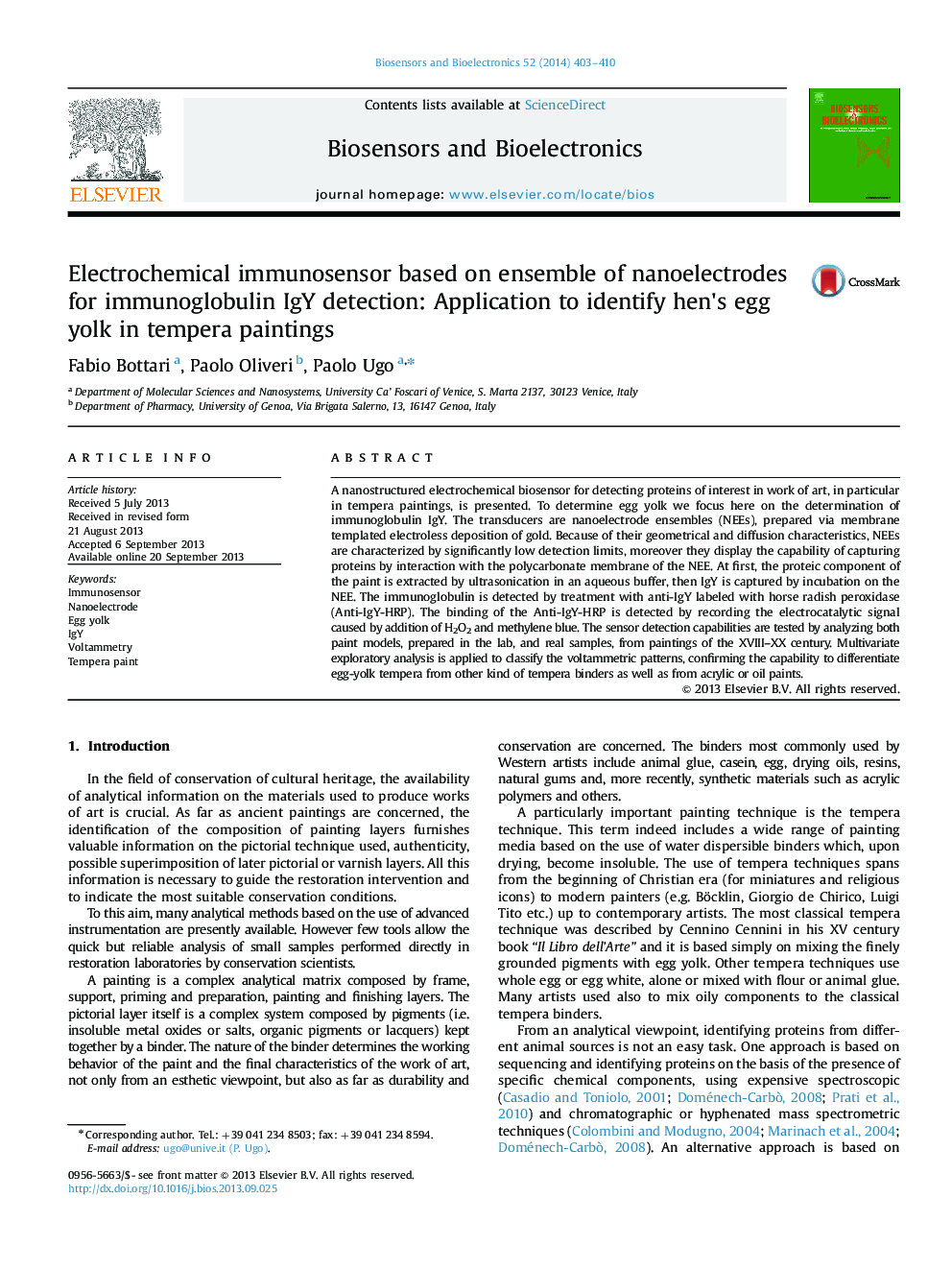| Article ID | Journal | Published Year | Pages | File Type |
|---|---|---|---|---|
| 866799 | Biosensors and Bioelectronics | 2014 | 8 Pages |
•Immunoglobulin IgY from egg yolk is detected using nanoelectrode ensembles (NEEs).•NEEs display efficient IgY capturing capability and improved S/N ratios.•NEEs can detect IgY extracted from small samples of modern and ancient (XVIII century) tempera paintings.•Multivariate analysis confirms that the IgY-biosensor discriminates egg yolk from other tempera, oil and acrylic binders.
A nanostructured electrochemical biosensor for detecting proteins of interest in work of art, in particular in tempera paintings, is presented. To determine egg yolk we focus here on the determination of immunoglobulin IgY. The transducers are nanoelectrode ensembles (NEEs), prepared via membrane templated electroless deposition of gold. Because of their geometrical and diffusion characteristics, NEEs are characterized by significantly low detection limits, moreover they display the capability of capturing proteins by interaction with the polycarbonate membrane of the NEE. At first, the proteic component of the paint is extracted by ultrasonication in an aqueous buffer, then IgY is captured by incubation on the NEE. The immunoglobulin is detected by treatment with anti-IgY labeled with horse radish peroxidase (Anti-IgY-HRP). The binding of the Anti-IgY-HRP is detected by recording the electrocatalytic signal caused by addition of H2O2 and methylene blue. The sensor detection capabilities are tested by analyzing both paint models, prepared in the lab, and real samples, from paintings of the XVIII–XX century. Multivariate exploratory analysis is applied to classify the voltammetric patterns, confirming the capability to differentiate egg-yolk tempera from other kind of tempera binders as well as from acrylic or oil paints.
